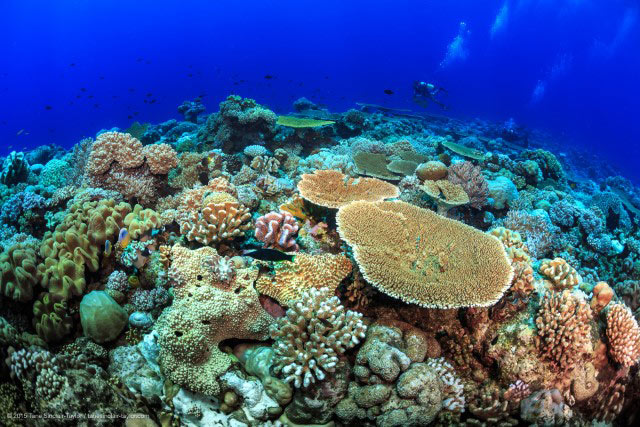 A University of Queensland researcher is part of a new global collaboration between eight universities and museums, announced this week, to preserve critical information about genomic biodiversity.
A University of Queensland researcher is part of a new global collaboration between eight universities and museums, announced this week, to preserve critical information about genomic biodiversity.
Associate Professor Cynthia Riginos of UQ’s School of Biological Sciences said the new Genomic Observatories Metadatabase (GeOMe) would assist scientists studying global challenges to earth’s biodiversity.
Dr Riginos said genomic biodiversity studies often lost critical information about where and when biological samples were collected.
“Information about the environment, location and date of each biological sample are critical for comparing biodiversity among different locations worldwide and tracking biodiversity across time,” she said.
“Until now, genomic researchers using samples collected from nature have lacked the tools to clearly link sampling information with their genomic data in a way that will allow future researchers to recover that context.
“GeOMe follows a ‘genomic observatory’ model of data collection, so individual researchers and institutions can easily share and access genetic data collected at specific times and places anywhere in the world, enabling them to ask the big questions about the structure and sustainability of life on the planet.”
Dr Riginos said scientists who analysed ecological samples — animals, plants or entire communities of microbes gathered from oceans, freshwater or land — typically had their own systems for tracking when and where samples were collected, but this information was easily lost and not searchable.
“GeOMe provides a cohesive framework by permanently linking information about samples’ temporal, environmental, and geospatial context to genetic sequence data stored by the USA’s National Center for Biotechnology Information,” she said.
“Future studies might investigate questions such as how the genomic composition of corals have changed with increasing temperature, or how microbial communities deal with increasingly acidic marine environments.
“GeOMe will safeguard the contextual information of past and ongoing biological collections to enable such comparisons in the future.”
Dr Riginos said genomic diversity fundamentally underpinned biodiversity, and data quality in either field was improved by knowing its temporal, environmental, and spatial context.
“Large scale and global investigations of biodiversity require collaboration,” she said.
“GeOMe will make big data and discovery in biodiversity genomics possible beyond the scope of any individual research team working alone.”
With GeOMe, researchers would be able to find and access genetic data collected at specific times and places anywhere in the world, enabling them to address big questions about the structure and sustainability of life on the planet.
Dr Riginos said GeOMe was a collaboration between researchers and computer scientists at UQ, at the Berkeley Institute for Data Science and Berkeley Natural History Museums at the University of California; California State University Monterey Bay; the Smithsonian’s National Museum of Natural History; the Hawai'i Institute of Marine Biology at the University of Hawai'i; Biocode; Texas A&M University; and the University of California’s Gump South Pacific Research Station, in Moorea, French Polynesia.
The GeOMe website - is publically accessible and a full description of the database is published in PLoSBiology.
Media: Associate Professor Cynthia Riginos, c.riginos@uq.edu.au, +61 7 3365 2152.



